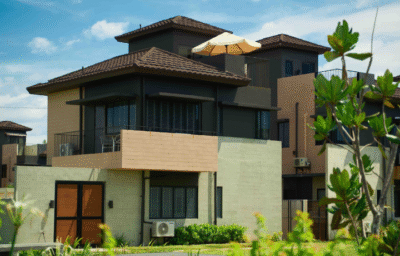For many Filipino-Americans and overseas Filipino workers, retiring in the Philippines offers a blend of affordability, cultural familiarity, and tropical beauty. Be it driven by emotional ties or economic advantages, settling down in the country requires meticulous planning, especially when it comes to real estate, taxation, healthcare, and other legal considerations.
To understand the nitty-gritty of this matter, here’s a comprehensive roadmap for retirees who are looking to transition smoothly into the local lifestyle:
Best Places to Retire in the Philippines

Choosing the right location depends on the place’s cost of living, healthcare access, and community atmosphere. Some of the most popular retirement destinations include the following:
Cebu City
Without a doubt, Cebu City remains one of the best retirement gems for many Filipinos abroad. It features a balance of urban convenience and coastal charm, is home to top-tier hospitals like Chong Hua Hospital and Cebu Doctors’ University Hospital, and has a thriving expat community with international restaurants and shopping centers.
Dumaguete
Known as the “City of Gentle People,” Dumaguete takes pride in its low cost of living and peaceful environment. This city is the birthplace of Silliman University Medical Center, which is a preferred hospital for retirees. Dumaguete also has a strong expat presence, making cultural integration easier to achieve.
Tagaytay
Tagaytay’s cooler climate, scenic views, and proximity to Metro Manila make it an ideal real estate investment for retirees who prefer countryside tranquility without the risk of isolation. Quality healthcare is also made possible if you live here, as it is near well-developed cities like Sta. Rosa and Makati.
Iloilo
Iloilo is indeed a mix of both worlds as it continues to flourish with modern amenities while retaining a laid-back provincial feel. Affordable housing and strong local governance are also two of its greatest assets, along with access to esteemed private hospitals like Western Visayas Medical Center.
Davao City
Known for its affordable living, strong security, and access to natural landscapes, Davao City is believed to be one of the most disciplined cities in the Philippines. Its progress was built on stringent policies that ensure cleanliness and safety, streamlined medical services, and prestigious hospitals like the Southern Philippines Medical Center.
Real Estate Options

From gated subdivisions to condominiums, retirees have several real estate options to choose from, depending on their lifestyle preferences.
Gated Subdivisions
Ideal for those who prefer 24/7 security, amenities, and a suburban vibe, gated subdivisions are a way to amp up security, safety, and community. These areas are often strategically planned, and are close business districts and medical institutions. Homes in gated communities tend to appreciate over time as well, making subdivision residences a long-term investment.
Condominiums
Condominiums are a great choice for retirees who favor easy upkeep and access to city conveniences. Condos often include gyms, pools, and concierge services, too, making it a comfortable and low-maintenance option. Moreover, under the Condominium Act of 1966, foreigners can
own condo units as long as foreign ownership in the building does not exceed 40%.
Countryside Homes
Privacy and space are the trademarks of rural homes. Larger land areas, gardens, and a slower pace of life are more possible in the province, and living expenses are relatively cheaper, too. For those who aspire to grow their own food or live sustainably, living in the countryside never disappoints.
Things to Consider When Retiring in the Philippines

As retirement is not just about relaxation, it’s important to consider financial stability, security, and personal satisfaction. By making informed decisions and taking proactive steps, you can ensure a smooth transition into your new life in the Philippines.
SRRV (Special Resident Retiree Visa)
The Special Resident Retiree Visa (SRRV) is a great option for foreign retirees, including former Filipinos, who do not wish to apply for dual citizenship. The benefits of this program of the Philippine Retirement Authority include:
1. Multiple-entry privileges with indefinite stay in the Philippines
2. Exemption from travel taxes when leaving the country
3. Access to local investments such as real estate and business ventures
4. Discounts on healthcare and other services
Note: Applicants must meet certain financial requirements, including a deposit ranging from $10,000 to $50,000, depending on age and retirement status.
Tax Implications
Retirees in the Philippines must consider various tax obligations:
1. Income Tax – Retirees earning passive income (such as rental income from properties) are subject to graduated income tax rates or a final withholding tax.
2. Capital Gains Tax (CGT) – A 6% tax applies to the sale of real estate classified as a capital asset.
3. Estate Tax – Retirees planning their estate must consider the 6% estate tax, which applies to the net value of assets transferred upon death.
4. Real Property Tax – There is an annual ad valorem tax imposed by local government units on land ownership within its territorial jurisdiction. This is typically 1% to 2% of the assessed value, based on the current schedule of market values.
Turning Retirement Plans Into Reality

Retiring in the Philippines gives one the option to afford cultural familiarity and a relaxed tropical lifestyle. Whether you are a Filipino-American returning home, an overseas worker planning to retire locally, or a foreign retiree seeking a peaceful haven, the Philippines provides diverse real estate choices, strong healthcare infrastructure, and financial advantages. However, a successful transition requires careful planning. From choosing the right location to understanding tax implications, securing quality healthcare, and designing a retirement home remotely, every step plays a crucial role in ensuring a comfortable and financially stable retirement.
Below are the next steps that you need to take to make it work:
1. Assessing your retirement needs – Define your budget, healthcare requirements, and lifestyle preferences.
2. Exploring real estate options – Whether it’s a gated subdivision, a condominium unit, or a countryside home, choose a property that aligns with your retirement goals.
3. Understanding tax and legal considerations – Ensure compliance with capital gains tax, estate planning, and property ownership laws.
4. Securing healthcare coverage – Enroll in PhilHealth or go for a private insurance to guarantee access to top-tier medical facilities and services.
5. Applying for the SRRV Visa – If eligible, take advantage of the Special Resident Retiree Visa for long-term residency benefits.
6. Consulting with experts – Work with licensed real estate brokers, lawyers, and financial advisors to navigate the complexities of retirement planning.
If you’re ready to take the next step, connect with local experts, explore real estate opportunities, and start building your dream retirement home today!
